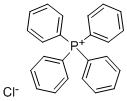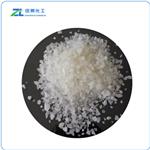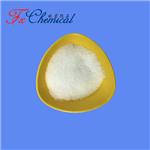Chemical Properties
White to beige crystalline powder
Uses
Tetraphenylphosphonium chloride is used to generate lipophilic salts from inorganic and organometallic anions. Thus, Ph4P+ is useful as a phase-transfer catalyst, again because it allows inorganic anions to dissolve in organic solvents.
Preparation
Tetraphenylphosphonium chloride(PPh4Cl) and many analogous compounds can be prepared by the reaction of chlorobenzene with triphenylphosphine catalysed by nickel salts:
PhCl + PPh3 → Ph4PCl
Application
Tetraphenylphosphonium chloride can be used to tune the crystallinity of CH3NH3PbI3 thin film during the deposition for boosting perovskite solar cells (PSCs) device performance. It can also be used as arylating reagents in Pd-catalyzed Heck reaction.
Reactions
Tetraphenylphosphonium chloride reacts with organometallic anionic complexes to give the corresponding salts. Depending on the size of the alkyl groups, the reaction of tetraphenylphosphonium chloride with a lithium dialkylamide can proceed in two directions to give 9-phenyl-9-phosphafluorene and benzene, or triphenylphosphine and the dialkylaniline. Lithium monoalkylamides react with tetraphenylphosphonium chloride to give (also depending on the size of the substituents) either N-alkyltriphenylphosphines or phosphine.
Purification Methods
Crystallise the chloride from acetone and dry at 70o under vacuum. It can also be recrystallised from a mixture of 1:1 or 1:2 dichloromethane/pet ether, the solvents having been dried over anhydrous K2CO3. The purified salt is dried at room temperature under a vacuum for 3days, and at 170o for a further 3days. Also recrystallise it from isoPrOH/Et2O or EtOH/Et2O. Extremely hygroscopic. [Wittig & Geissler Justus Liebigs Ann Chem 580 44, 50 1953, Willard et al. J Am Chem Soc 70 737 1948, Beilstein 16 III 851, 16 IV 984.]




